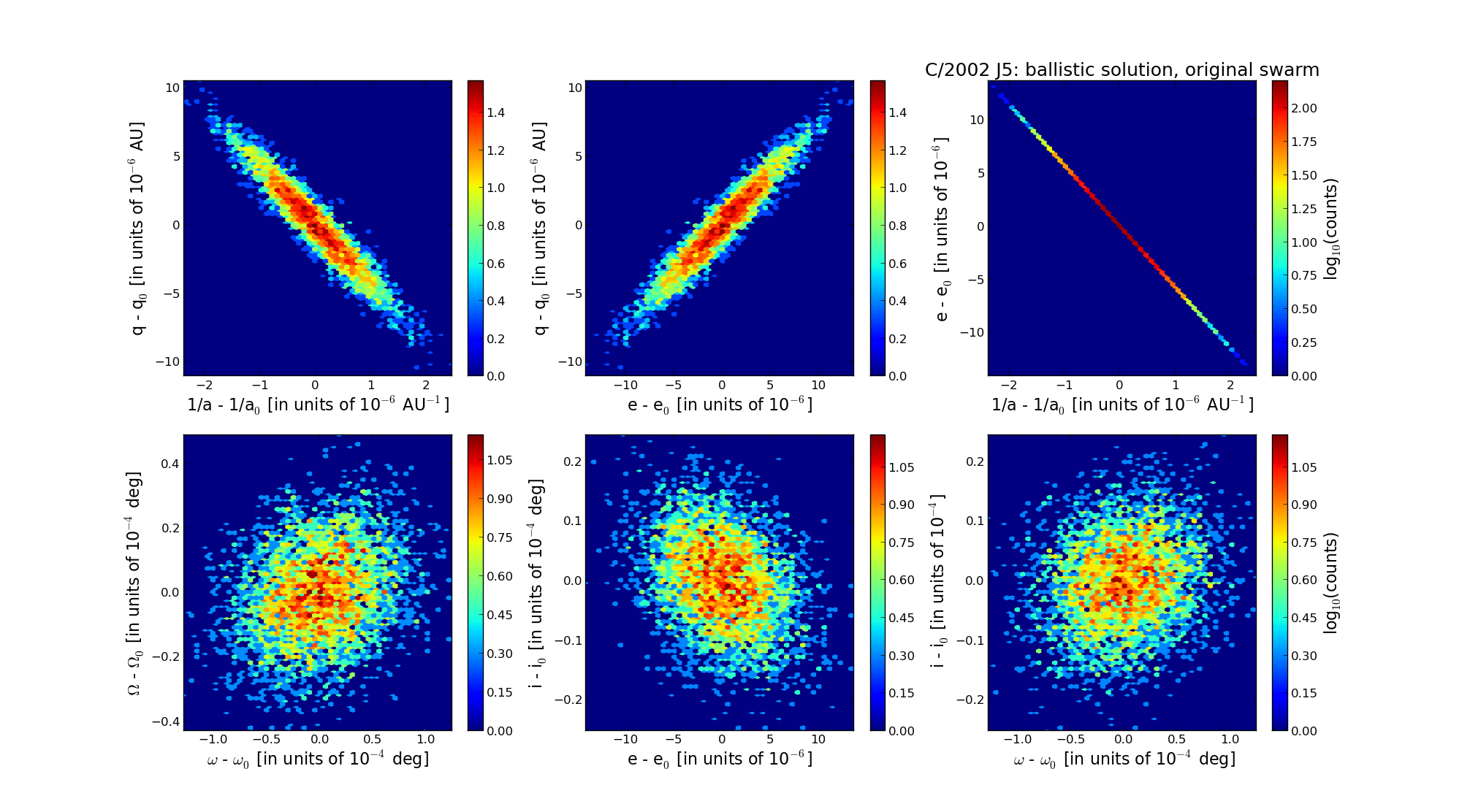| Solar System Dynamics & Planetology Group |
 |
C/2002 J5 LINEAR |  |
| Solar System Dynamics & Planetology Group |
 |
C/2002 J5 LINEAR |  |
| number of observations | 618 |
| number of residuals | 1227 |
| data interval | 2001 Aug. 6 — 2006 Mar. 5 |
| rms [arcsec] | 0.53 |
| orbit quality class | 1a+ |
| Epoch (TT) | 20031008.0 | = JD 2452920.5 |
| time of perihelion passage (TT) | 20030919.309165 | ± 0.000422 |
| perihelion distance | 5.72679475 | ± 0.00000292 |
| eccentricity | 1.00116654 | ± 0.00000388 |
| argument of perihelion [deg] | 74.832954 | ± 0.000039 |
| longitude of the ascending node [deg] | 314.110065 | ± 0.000013 |
| inclination [deg] | 117.228214 | ± 0.000007 |
| inverse semimajor axis [10-6 au-1] | -203.70 | ± 0.68 |

| Epoch (TT) | 16960906 | |
| time of perihelion passage (TT) | 20030919.798348 | ± 0.000416 |
| perihelion distance | 5.72509311 | ± 0.00000298 |
| eccentricity | 0.99966097 | ± 0.00000388 |
| argument of perihelion [deg] | 74.902635 | ± 0.000039 |
| longitude of the ascending node [deg] | 314.051668 | ± 0.000013 |
| inclination [deg] | 117.213649 | ± 0.000007 |
| inverse semimajor axis [10-6 au-1] | 59.22 | ± 0.68 |
| Epoch (TT) | 23100422 | |
| time of perihelion passage (TT) | 20030920.575808 | ± 0.000426 |
| perihelion distance | 5.73013639 | ± 0.00000291 |
| eccentricity | 0.99992376 | ± 0.00000388 |
| argument of perihelion [deg] | 74.912592 | ± 0.000039 |
| longitude of the ascending node [deg] | 314.086941 | ± 0.000013 |
| inclination [deg] | 117.190377 | ± 0.000007 |
| inverse semimajor axis [10-6 au-1] | 13.30 | ± 0.68 |